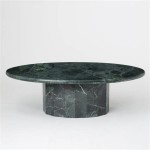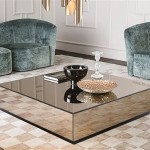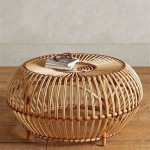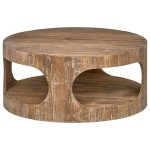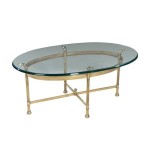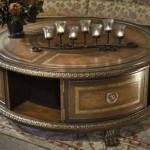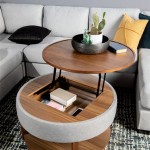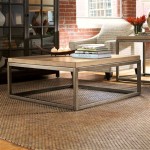What Causes A Glass Table To Shatter In The Middle Of Screen?
A glass table shattering spontaneously, seemingly without any external force, can be a startling and even frightening experience. Understanding the underlying causes of this phenomenon requires a careful examination of the properties of glass, the manufacturing processes involved, and the types of stresses that can accumulate within the material over time. While seemingly fragile, glass possesses a complex internal structure that, when compromised, can lead to a catastrophic failure.
Several factors can contribute to the sudden shattering of a glass table. These factors can be broadly categorized into manufacturing defects, temperature fluctuations, and applied stress (both direct and indirect). Each of these areas presents a unique set of challenges and contributes to the overall likelihood of a glass table failing in this manner.
Manufacturing Defects and Imperfections
The manufacturing process of glass, despite its technological advancements, is not immune to imperfections. Microscopic flaws, often invisible to the naked eye, can act as stress concentrators within the glass structure. These flaws, such as tiny bubbles (inclusions) or surface scratches, can significantly weaken the material and make it more susceptible to shattering under pressure.
One common type of imperfection is the presence of nickel sulfide (NiS) inclusions. These inclusions can undergo a phase transformation over time, expanding in volume. This expansion creates internal stress within the glass, and if the stress exceeds the glass's tensile strength, it can lead to spontaneous breakage. The likelihood of NiS inclusions being present is higher in glass that has not undergone a proper heat soaking process. Heat soaking involves heating the glass to a specific temperature for a set period to accelerate the phase transformation of unstable NiS inclusions, causing them to break the glass during the manufacturing process rather than later in service.
Another crucial aspect of glass manufacturing is the annealing process. Annealing is a heat treatment process used to relieve internal stresses within the glass caused by rapid cooling after it is formed. If the annealing process is not performed correctly, residual stresses can remain within the glass, making it more prone to fracture. These residual stresses can be unevenly distributed throughout the glass, creating weak points that can lead to shattering, particularly when combined with other stressors.
Surface scratches, even seemingly minor ones, can also have a significant impact on the structural integrity of glass. These scratches act as stress risers, concentrating stress at the tip of the scratch. This concentration of stress can greatly reduce the glass's resistance to fracture, especially when combined with other factors like temperature changes or applied loads. The deeper and sharper the scratch, the greater the stress concentration and the higher the risk of catastrophic failure.
Temperature Fluctuations and Thermal Stress
Glass, like all materials, expands and contracts with changes in temperature. However, unlike some materials, glass is a relatively poor conductor of heat. This means that when a glass table is exposed to a temperature difference, such as sunlight shining on one section while another section remains shaded, different parts of the glass will expand or contract at different rates. This differential expansion creates thermal stress within the glass.
If the thermal stress is significant enough, it can exceed the tensile strength of the glass, leading to cracking or shattering. This is particularly true in tempered glass, which is designed to be stronger but can also be more susceptible to shattering under extreme temperature fluctuations. Tempered glass has a compressed outer layer and a tensile inner layer. When the thermal stress exceeds the compression on the outside, the glass can release all of its stored energy, shattering into small, relatively harmless pieces.
Direct sunlight is a major contributor to thermal stress. Dark-colored glass tables are more prone to this type of breakage as they absorb more heat than lighter-colored tables. Additionally, placing a glass table near a heat source, such as a radiator or a fireplace, can also create significant temperature gradients and increase the risk of shattering.
Sudden changes in temperature, such as placing a hot dish directly on a cold glass table, can also induce thermal shock and lead to immediate failure. The rapid heating of the surface layer causes it to expand quickly, while the underlying glass remains relatively cool and contracted. This creates a large tensile stress on the surface, which can easily exceed the glass's strength, especially if there are pre-existing micro-cracks or other imperfections.
Applied Stress and External Factors
Beyond manufacturing defects and temperature fluctuations, applied stress, both direct and indirect, plays a crucial role in the shattering of glass tables. This can involve direct impacts, uneven weight distribution, or even vibrations that accumulate stress over time.
Direct impacts, even seemingly minor ones, can cause localized stress that leads to fracture. The severity of the impact required to shatter glass depends on several factors, including the type of glass, its thickness, and the presence of any pre-existing flaws. Tempered glass is more resistant to impact than annealed glass, but it is still susceptible to shattering if the impact is strong enough, particularly if it occurs at the edge of the table.
Uneven weight distribution is another significant factor. If a glass table is not properly supported or if heavy objects are placed unevenly on its surface, it can create bending stresses that exceed the glass's tensile strength. Over time, this constant stress can weaken the glass and make it more prone to shatter. The design of the table base and the number of support points are crucial in ensuring even weight distribution and minimizing stress on the glass.
Vibrations, although often overlooked, can also contribute to the failure of glass tables. Constant vibrations, such as those from nearby machinery or heavy traffic, can cause microscopic cracks to grow and propagate over time. This phenomenon, known as fatigue, weakens the glass and makes it more susceptible to shattering under even minor stress. The effect of vibrations is magnified if the glass table is not properly secured or if it is placed on an uneven surface.
Furthermore, the type of frame supporting the glass table top can affect how stress is distributed. A rigid frame can concentrate stress at specific points, while a more flexible frame can help to distribute the load more evenly. The material of the frame can also play a role; for example, a metal frame that expands and contracts at a different rate than the glass can induce additional stress.
The age of the glass can also be a factor. Over time, glass can undergo a process called "static fatigue," where it slowly weakens under sustained stress. This is due to the slow growth of microscopic cracks in the presence of moisture and other environmental factors. Therefore, older glass tables may be more prone to shattering than newer ones, even if they appear to be in good condition.
In summary, the shattering of a glass table in the middle of the screen is rarely caused by a single factor. It is typically a combination of one or more of the following: manufacturing defects, temperature fluctuations, and applied stress. Understanding these contributing factors can help in taking preventative measures to reduce the risk of such an event. Careful inspection of the glass for any imperfections, maintaining a stable temperature environment, and ensuring even weight distribution are all important steps in preserving the integrity of a glass table.

Glass Tables Are Exploding Here S Why

Glass Tables Are Exploding Here S Why

Glass Tables Are Exploding Here S Why

Glass Tables Are Exploding Here S Why

Glass Tables Are Exploding Here S Why

Causes Of Spontaneous Glass Breakage And How To Prevent It Sieger Architektur Systems

Causes Of Spontaneous Glass Breakage And How To Prevent It Sieger Architektur Systems

Emergency Glass Repair 6 Things You Should Do When Breaks O Brien

Causes Of Spontaneous Glass Breakage And How To Prevent It Sieger Architektur Systems

What Causes Glass To Shatter By Itself
Related Posts

